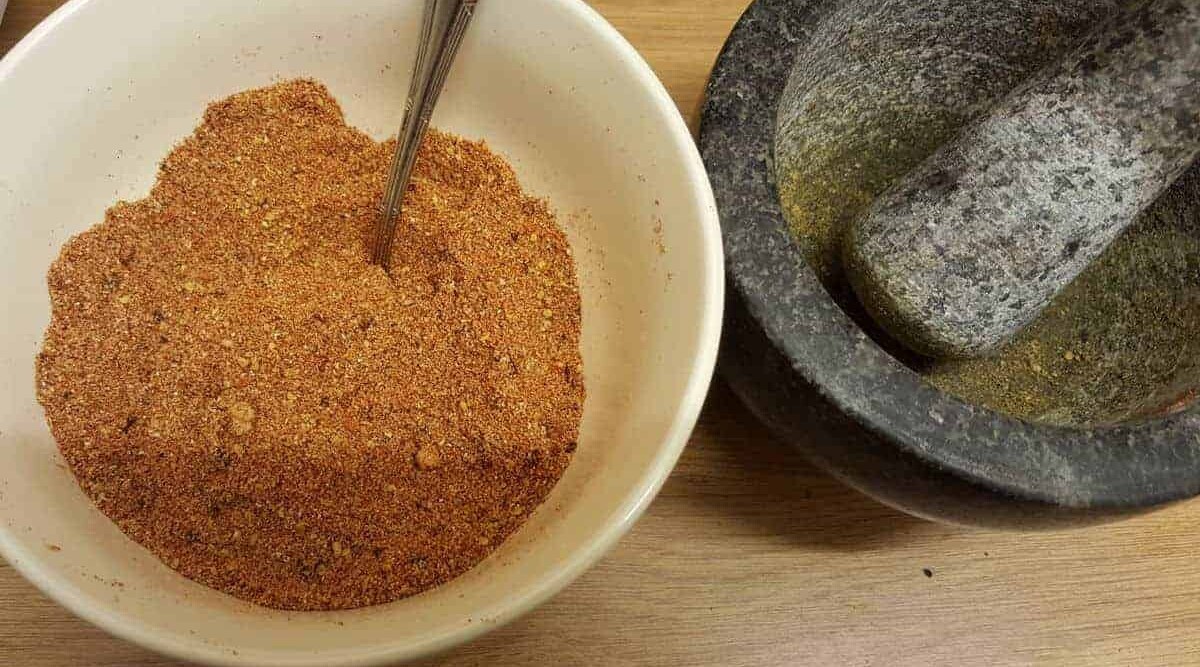
If you’ve ever wondered how to make a dry rub, you’re in the right place . This article is a comprehensive guide where you’ll learn everything from choosing the right ingredients and making simple yet effective rubs, to experimenting with more complex blends for those ready to take their grilling to the next level.
As someone who has spent countless hours experimenting with spices and seasonings, I can assure you that making your own rub isn’t just rewarding, it’s a game-changer for having complete control over the flavors you create.
Crafting your own dry rub means taking command of the flavors and customizing them to suit your palate and chosen cuts of meat.
What You’ll Learn in This Guide
- How to make: Dalmatian rub, SPG, SPOG, all-purpose BBQ rub, and a pork and chicken rub.
- How to experiment with different herbs, spices, and seasonings to help you create rubs suited to specific cuisines and meats.
- How to substitute for different kinds of salt, pepper, and sugar, so you can use whatever you have in your cupboards.
- How to follow simple ratios for ingredients such as 5:4:3:2:1, or 4:3:2:1, or 3:2:1, or 8:3:1:1, to produce perfect rubs every time.
- How to make simple rubs perfectly suited to beef, pork, chicken, lamb, and fish.
- Wet rubs, which include oil or Worcestershire sauce, can be used to help the rub adhere to the meat.
Jump to:
- 1 What You’ll Learn in This Guide
- 2 Five Steps to Five Rubs Flowchart
- 3 Before We Start — A few Words on Ingredients and Substitutes
- 4 How to Make Your Own Rubs — Simplified Version
- 5 How to Make Your Own Rub — In Depth, Next Level Version
- 6 The Triumvirate of Base Flavors
- 7 What Kind of Salt Should You Use?
- 8 Pepper: It’s Nothing to Sneeze At
- 9 What About Paprika?
- 10 Stick to Ratios as the Path to Success
- 11 Example Ingredient Ratios for a Pork Rub
- 12 Example Ingredient Ratios for a Beef Rub
- 13 What are the Best Herbs and Spices to Use with Different Meats?
- 14 Regional Flavors
- 15 Other Seasonings to Consider
- 16 Wet Rubs vs. Dry Rubs
- 17 The Finishing Touch
Five Steps to Five Rubs Flowchart
Here’s a little five step flowchart for those of you who just want a good rub to use, without having to read the whole article.
This is 5 steps you can take, to walk you through from a simple salt and pepper rub, to a sweet multi-ingredient rub for pork and chicken, with 3 further rubs along the way.

Before We Start — A few Words on Ingredients and Substitutes
In making the rubs, you will see me mention things by volume, in teaspoons, tablespoons, and cups. You will also notice I use kosher salt, coarse cracked black pepper, and garlic powder (not granules) etc.
Typically, I have many different types of pepper and a few salt types in my cupboards, but what if you only have table salt and not kosher salt? Or fine ground black pepper, not coarse?
The problem is that fine table salt contains significantly more salt than kosher salt by volume due to its fine grind and closely-packed crystals. If you substitute table for kosher salt using the same measurement, the resulting rub could end up excessively salty, and possibly unpalatable.
However, the reverse applies to black pepper. As it’s ground finely, the oils and aromatics within the pepper oxidize, dulling its flavor. Therefore, if you substitute finely ground black pepper found in your kitchen for freshly ground coarse black pepper, you’ll need to use more to achieve the same taste.
Deviation from specific ingredients can throw off the intended flavor. If the correct ingredients aren’t available, consider using the following basic conversions:
- Kosher salt to table salt: Take away 20% (or 1/5th) of what’s stated.
- e.g. 4 tbsp of kosher salt = 3.2 tbsp of table salt (or just over 3)
- Fine ground pepper for coarse ground: Add about 25% of fine ground, as the finer ground pepper is, the less potent it’s taste.
- e.g. 4 tbsp of coarse pepper = 5 tbsp of finely ground black pepper.
- Garlic powder to garlic granules: Double it / increase 100%.
- e.g. 2 tbsp garlic powder = 4 tbsp garlic granules
- Onion powder to dried onion flakes: Treble it, or add 200%
- e.g. 2 tbsp onion powder = 6 tbsp onion flakes
Note: Morton has a fantastic salt type conversion chart to save you from any math.
I advise following the ingredient lists precisely. However, if you lack any items, feel free to substitute. Just make sure you adjust the quantity accordingly to maintain the right flavor balance.
How to Make Your Own Rubs — Simplified Version
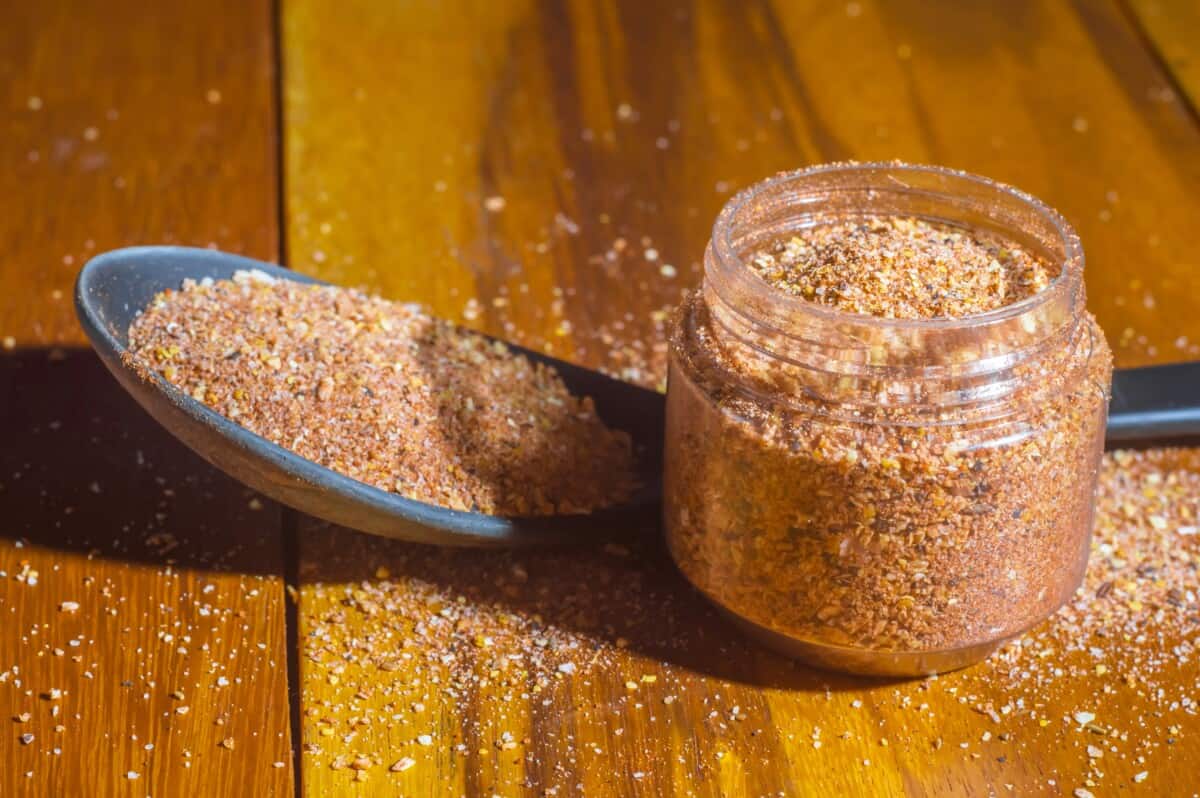
Following is how to make five very simple dry rubs that every outdoor cook should have in their arsenal. And don’t be put off by their simplicity, these are very popular and for good reason! We are going to cover:
- Dalmatian rub, (salt and pepper) — ‘Texas-style’ beef rub.
- SPG rub, (Salt, Pepper, Garlic) — add garlic powder to Dalmatian rub.
- SPOG rub, (Salt, Pepper, Onion, Garlic) — add onion to SPG.
- All-purpose BBQ rub — Add a few spices to SPOG rub for an all-purpose BBQ rub.
- Pork and chicken rub — Add sugar to the all-purpose BBQ rub to make it suitable for pork and chicken.
Sometimes a simple rub, when combined with a little lick of smoke from a BBQ is all that’s needed to bring out and highlight the natural flavor of meat rather than completely hide it.
These first five rubs are made from simple ingredients that you will likely already have in your spice rack. If nothing else these rubs can be a good fallback to use for when you don’t have the ingredients for something more complicated, or just want the taste of a good cut of meat to shine.
Texas Style Dalmatian Rub — Start with Simply Salt and Pepper
The Dalmatian rub, often considered the simplest of all rubs, comprises only salt and pepper. Also referred to as a ‘Texas-style’ beef rub, it gained immense popularity from Aaron Franklin’s brisket recipe.
Primarily used for beef, this rub complements smoked brisket, short ribs, and tri-tip. Black pepper is universally acclaimed as a perfect match for beef, and the generous amount of salt highlights the umami flavor.
The pair will bring out a deep beefy flavor, and during a long, low n slow smoke will work to create a desirable, deep and chewy bark.
The important thing here is to use a 50/50 equal amount of coarse cracked black pepper and kosher salt BY VOLUME, not weight. This is true for all rubs in the rest of this guide, so I will not mention it again.
Dalmatian Rub Ingredients — Makes 1/2 cup
- 4 tbsp of freshly ground coarse black pepper
- 4 tbsp of kosher salt
SPG Rub — Salt, Pepper, Garlic
SPG is a simple rub, consisting of Salt, Pepper and Garlic. It’s good on almost anything as it is (you should definitely try it!) and forms the base to which other ingredients are added to make many more rubs (we’ll get to this later.)
You can simply add garlic to the dalmatian rub above in a 2:2:1 ratio to make SPG, and this works perfectly well.
SPG Rub Ingredients — Makes 5/8 Cup
- 4 tbsp kosher salt
- 4 tbsp freshly ground coarse black pepper
- 2 tbsp garlic powder
However, for some tastes, this can be too peppery and not enough garlic for anything but beef. For example, pork or chicken. So a preferred ratio becomes 3:2:1 for Salt, Garlic, Pepper. But maybe then it would be called an SGP rub and not SPG?
Play around with the ratios and do what’s best for you. If you prefer less pepper and more garlic, simply tweak it.
SPOG Rub — Salt, Pepper, Onion, Garlic, The Original All-Purpose Rub
The addition of onion powder to SPG makes SPOG, the most basic all-purpose rub you will come across before getting into more complicated and specialized rubs for different purposes.
This rub is perfect for beef, pork or chicken, and is even good to use sparingly on many vegetables.
To make SPOG, simply add 1 part onion powder to the SPG rub:
SPOG Rub Ingredients — Makes 3/4 Cup
- 4 tbsp kosher salt
- 4 tbsp freshly ground coarse black pepper
- 2 tbsp onion powder
- 2 tbsp garlic powder
Again, if you find it’s too salty, you can reduce the salt content. If it’s too peppery, reduce the amount. If not strong enough with onion or garlic, increase them. That’s the beauty of making your own rubs, you can tweak them to match your personal tastes. So do experiment!
All Purpose BBQ Rub — Add a Few Herbs and Spices, and add Sugar for Pork
To create a versatile BBQ rub, we must enhance SPOG with a few elements for added heat, color, and sweetness. The sugar will help with caramelization and develop a delicious crust on pork and chicken, supplemented with other spices for an intensified flavor.
Here’s my go-to all-purpose rub recipe applicable for pork, chicken, beef, and vegetables— virtually anywhere. However, I typically leave the sugar out for beef. You could also reduce it by half if you like a sweeter beef, in which case add 3 tbsp of sugar.
All Purpose BBQ Rub Ingredients — Makes Approx. 1.5 Cups
- 4 tbsp kosher salt
- 4 tbsp freshly ground coarse black pepper
- 2 tbsp onion powder
- 2 tbsp garlic powder
- 1 1/2 tbsp paprika
- 1 tsp cayenne pepper
- 2 tsp toasted cumin seeds
- 2 tsp toasted coriander seeds
- 2 tsp mustard powder
- 6 tbsp dark brown sugar (For Pork and chicken only, leave the sugar out for beef.)
As always, feel free to play around with the ratios and ingredients until you find what works for you. Everybody’s tastes are different, find your own sweet spot.
What I will say right away is, for many people the amount of black pepper in this ‘all-purpose rub’ can be a bit much for their tastes, except for with beef where a lot of pepper is wonderful.
So right away, you might want to experiment with reducing the pepper content if you are going to use the above rub on pork, chicken or vegetables, perhaps by as much as half.
How to Make Your Own Rub — In Depth, Next Level Version
The simple rub recipes provided above are a good starting point and suit a variety of BBQ dishes. However, using such a limited range of rubs leads to all your meats tasting somewhat the same.
While the meat’s flavor, different wood smokes, and various sauces add diversity, the constant use of the same rubs can make everything too similar.
Variety is key in cooking, and it’s essential for my enjoyment. To achieve this, I’ll guide you on creating more complex rubs tailored to different meats and cuisines, allowing you to add a personal touch to your grilling and smoking.
The Triumvirate of Base Flavors
When it comes to flavor additives, salt, pepper, and sugar are the primary three found in most rubs and seasonings.
Salt and pepper are staples on restaurant tables, and sugar is frequently present, too. And these three ingredients are commonly found in all kitchens globally.
So, unsurprisingly, they form the foundation of almost every BBQ rub. This is convenient as you likely already have them at home, saving you a trip to the grocery store for your next spice run.
What Kind of Salt Should You Use?
There are many types of salt you can use. Below is an overview of the most common ones.
Table Salt — The most familiar kind of salt, table salt is usually iodized and highly refined. It’s finely ground, relatively free from impurities, and has anti-caking agents added to help it flow freely from a shaker.
While not exotic, there’s nothing wrong with using this old standby in your rubs, though many people do regard it as unhealthier and less tasty than almost all other salts due to its refined nature and additives.
Kosher Salt — Flakier and coarser than table salt, it’s less refined and typically lacks additives like iodine.
It dissolves quickly when cooked, making it ideal for seasoning meat. Originally used to draw out moisture in the koshering process, its coarse, flaky nature allows for easy control when sprinkling onto food. Trace minerals add health benefits, making it a preferred choice for seasoning and rubs.
Sea Salt — As the name implies, this salt is harvested by evaporating seawater and is less processed and refined than kosher and table salts.
Because it doesn’t go through such a rigorous refining process, sea salt is coarse and usually full of other trace minerals such as zinc and potassium, as well as other ingredients that may even give it a color other than white.
For these reasons, sea salt adds a more complex flavor than table or kosher salt, making it great as a seasoning on its own, or as a base for a rub.
Himalayan Pink Salt — Gaining popularity in upscale restaurants, this salt appeals to both new-age enthusiasts and chefs. Its raw form boasts a rich trace mineral content, including potassium, iron, and magnesium, contributing to its unique taste and pink to red hues. Available in large flaky crystals or finely ground.
While often used in salt lamps, its best role is as an appealing and flavorful ingredient in rubs.
Fleur de Sel — If you really want to wow your friends, add a dash of this hand-harvested French sea salt, and be sure to leave out the package and the receipt!
A light salt that works wonders on veal, lamb, or fish, it sells for about 4 or 5 dollars… an ounce.
For a similar but slightly less costly French coast salt, try Celtic Sea Salt. It’s the gray salt found under fleur de sel, and it’s great for fish.
Hawaiian Salt — There are two kinds of colored Hawaiian salt: black and red. The black stuff get its color from charcoal that’s added in, and the red salt is naturally colored by local clay that’s rich in iron.
Both are well suited to seafood, but the black also works for pork, and the red looks and tastes great on beef.
Smoked Salt — Well, this stuff just has BBQ written all over it! Some genius took salt and smoked it slowly over a wood fire and came up with this modern marvel.
There are different flavors created with different kinds of wood; pick your favorite and put it in your blend to add a smoky and robust character without having to smoke the meat itself.
Pro Tip for Salt Use in Dry Rubs
Salt draws moisture from meat, so applying a salt-based rub too early can dry out the meat. Apply it shortly before cooking to draw out just enough moisture for a crust without overly drying the meat.
Alternatively, use dry brining, where salt applied hours before cooking draws out moisture, which then reabsorbs into the meat with the dissolved salt, deeply seasoning it while retaining moisture.
So either apply salt either just before cooking or over 3 hours before. Avoid times in between to prevent drying out the meat.
Pepper: It’s Nothing to Sneeze At
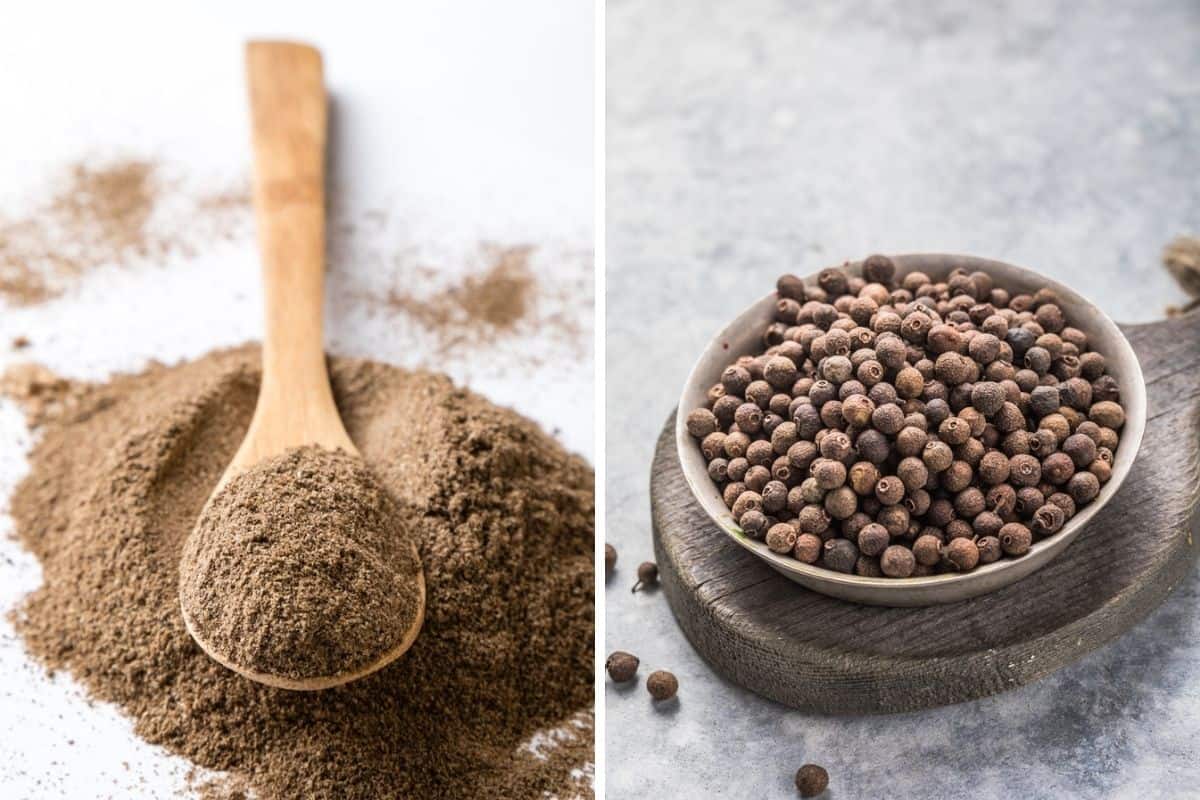
Pepper is made by grinding peppercorns, which are actually berries.
Originally from India, peppercorn vines are now cultivated in hot regions globally, leading to various regional varieties with unique flavor profiles. You can find pepper from places like Sumatra, Vietnam, or Ecuador.
The famous black peppercorns we’re used to seeing it in pepper mills are unripe berries that have been harvested and dried, perhaps through cooking, or perhaps by just leaving them out in the sun.
White peppercorns used to be black before they were soaked and peeled.
Green peppercorns are picked before they’ve matured and are then dried. Green peppercorns are famously used in steak au poivre, a classic French steak preparation.
Pink peppercorns — They originate from either Peru or Brazil, but do not come from the same family of plants as the black, white, or green peppercorns. So pink peppercorns are not, in fact, peppercorns at all!
They look great, and have a nice flavor used lots with fish dishes, but be warned: they are related to cashews and could be dangerous to anyone with a tree nut allergy.
What About Paprika?
Many people enjoy paprika for its flavor and appealing color in dishes. Unlike pepper from ground peppercorns, paprika is made from dried and ground New World peppers, such as sweet bell or even some types of chili peppers.
It’s flavorful, colorful, but entirely distinct from peppercorns.
Stick to Ratios as the Path to Success
Many people experiment with seasonings by mixing random ingredients, hoping for a good outcome.
I once created a fantastic blend for grilled tilapia by randomly choosing spices from my cupboard. My kids still remember it, but unfortunately, I can’t recall the ingredients and haven’t replicated it since.
This isn’t the best way to make a rub. A structured approach is key for consistent results. Creativity is encouraged, but starting with a basic formula allows for safe experimentation and avoids the chance of an unrepeatable success.
There are established ingredient ratios to use as a starting point, which we’ll discuss now.
Example Ingredient Ratios for a Pork Rub
According to science and Alton Brown, neither of which can be argued with, the perfect ratio for a dry rib rub is 8:3:1:1. That means your first ingredient makes up 8 parts of 13, and your second is 3 parts, and so on.
The most significant portion of the rub (the 8) is sugar. Sugar caramelizes beautifully and is ideal for enhancing the flavor of pork. While you could use good ol’ white sugar, feel free to play around with Demerara, brown, maple, and other kinds of sugar.
Then add 3 parts salt, choosing from the types mentioned earlier.
For the third ingredient, use chili powder or paprika to add flavor and color, depending on whether you want a spicy or mild rub.
Finally, choose a seasoning to complete the rub. You can mix two or three spices, ensuring they total one part for balance.
Pork Dry Rub Recipe
Going with the 8:3:1:1 ratio, we can knock up a wonderful pork rub recipe that works well, using some ingredients from the section on ‘pork seasonings’ below as follows:
- 8 tbsp turbinado sugar (8 parts sugar)
- 3 tbsp kosher salt (3 parts sugar)
- 1 tbsp paprika — American or smoked (1 part)
- 1.5 tsp onion powder (1/2 part toward 1)
- 1.5 tsp rosemary powder (1/2 part toward 1)
Example Ingredient Ratios for a Beef Rub
For beef, it’s often better to use more salt and pepper than sugar in rubs. Salt enhances beef’s natural flavors, while sugar adds a different taste that some people enjoy on beef, but most don’t. You can experiment with the 8:3:1:1 rub on beef, but I’d be surprised if you don’t find it too sweet..
Common ratios for beef rubs include:
- 5:4:3:2:1
- 4:3:2:1
- 3:2:1
Where the first three ingredients are Salt, Pepper, Sugar, in that order.
Longer ratios offer customization for specific flavors or regional tastes.
Some recipes suggest even higher salt ratios, up to 10 parts. While these are small amounts, balance is key. Taste preferences vary, and some might like more salt. But, as mentioned earlier, too much salt can dry out meat.
Beef Dry Rub Recipe
For a beef rib recipe, we’ll use an example 4:3:2:1 ratio. This will be 4 parts salt, 3 parts black pepper, and 2 parts sugar content.
The final ‘1’ part can be made up of any other spices and seasonings you desire, that can be picked from the below section of ‘best seasonings for beef.’ You can pick just one, or a multitude of different ingredients. You just have to make sure they add up to 1 part in total.
For example, if we are speaking in tablespoons, this is equal to 3 teaspoons. So we could add 1 teaspoon each of onion, garlic, and chili powder, to make up the total ‘1 part’ in tablespoons.
Have a play and see what works best for you.
But here is an example rub using the 4:3:2:1 ratio rule, using ingredients that work great with beef:
- 8 tbsp kosher salt, (4 parts pepper)
- 6 tbsp cracked black pepper, (3 parts pepper)
- 4 tbsp turbinado sugar (2 parts sugar)
- 2 tsp onion powder (1/3rd of one part toward 1)
- 2 tsp mustard powder (1/3rd of one part toward 1)
- 1 teaspoon ancho chili powder (1/6th of one part toward 1)
- 1 teaspoon cayenne pepper powder (1/6th of one part toward 1)
What are the Best Herbs and Spices to Use with Different Meats?
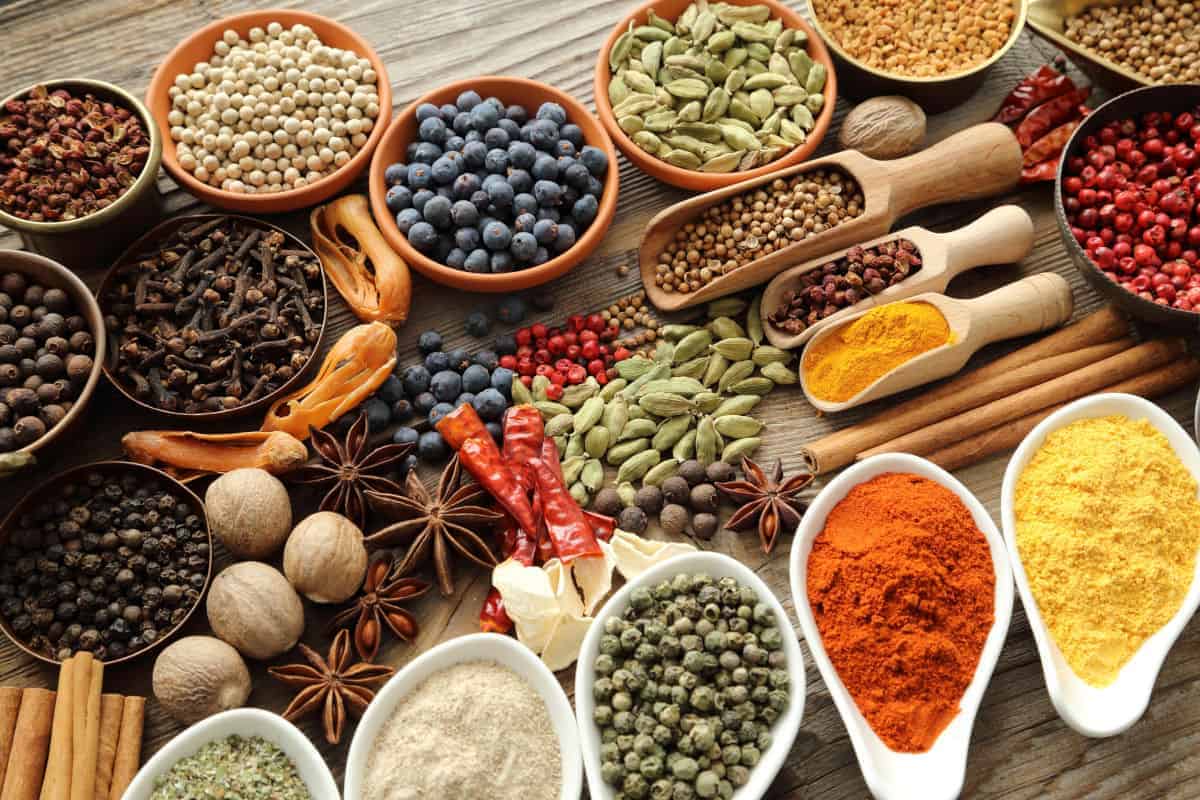
The best herbs and spices to use with different meats have been figured out, there’s a vast selection to choose from, but not all are suitable for every type of meat. It’s important to select a mix that complements the meat and your desired flavor profile.
I did consider giving an example rub recipe for each of many different types of meat, and cuisines, but this article is already long, so I will save rub recipes for individual articles later.
For inspiration and what to include in your rubs, though, here are a few herbs and spices to get you started, paired up with the most appropriate meat variety. Remember: there are no rules, only guidelines.
When you look at the ratios like 5:4:3:2:1, or 8:3:1:1, after the salt, pepper and sugar, you can make up the last ingredients by combining the following seasonings that pair with different meat types.
Note: I’ve left out pepper (and its relatives, like paprika), salt, and sugar. Those are a given.
So here are the best herbs and spices to use with each most common type of meat:
| Beef | Pork | Chicken | Lamb | Fish |
|---|---|---|---|---|
| Thyme | Rosemary | Thyme | Basil | Chives |
| Rosemary | Sage | Rosemary | Thyme | Dill |
| Garlic | Thyme | Coriander | Sage | Fennel |
| Oregano | Dry mustard powder | Sage | Mint | Coriander |
| Dried onion | Garlic | Marjoram | Oregano | Chili flakes |
| Sage | Cloves | Tarragon | Cinnamon | Tarragon |
| Dry mustard powder | Caraway | Ginger | Garlic | Ginger |
| Curry powder | Fennel | Basil | Marjoram | Celery seed |
| Basil | Celery seed | Parsley | Parsley | |
| Turmeric |
Regional Flavors
Sometimes, you want to try and mimic the flavor of a far-off land, and give your taste buds a vacation from the ordinary. Indian, Thai, Tex-Mex, Caribbean — there are fantastic flavors to be found all over the globe, and you don’t have to rack up the frequent flyer miles to try them.
Taking a trip to the neighborhood grocery store may yield some good finds for regional cuisine. If you’re feeling a bit more adventurous, seek out an ethnic supermarket or find a good local market where regional offerings might be available.
Some spices that can add a taste of somewhere far away include:
| Mexican | Indian | Asian | Cajun / Creole |
|---|---|---|---|
| Chili powder | Cumin | Garlic | Onion |
| Onion | Mustard | Ginger | Celery seed |
| Cumin | Coriander | Curry | Chili powder |
| Cayenne | Cloves | Cilantro | Cumin |
| Curry | Lemongrass | Cloves | |
| Pepper |
Kansas City Here I Come
Of course, not all regional flavors are found thousands of miles away. For example, the Kansas City rub is known far and wide, but many of you may live within a short haul flight of the source of origin.
The Kansas City rub is made of brown sugar, paprika, white sugar, garlic salt (my go-too spice for everything), celery salt, chili powder, black pepper, cayenne, and dry mustard.
Not to be outdone, Texas has its own rub consisting of paprika, brown sugar, chili powder, kosher or sea salt, black pepper, garlic, onion, and cumin.
In fact, there are regional varieties of BBQ flavorings to be found across the United States, Canada, and in many countries around the world.
Other Seasonings to Consider
Most of the spices and herbs I’ve discussed so far are easily purchased individually for custom-making your own rubs. However, there’s no reason not to try one of the many pre-blended spice combinations readily found in most stores that sell spices and seasonings.
Examples include:
- Adobo
- Asian Five-Spice
- Caribbean jerk
- Mexican
- Italian
- Herbes de Provence
While some spice enthusiasts might consider these blends to be cheating, they can be useful time-savers and may bring a level of authenticity that might otherwise be difficult to achieve. (As an example, Asian Five-Spice blends star anise, Szechuan peppercorns, fennel, cassia, and clove.)
There are many exotic spices one can try out, too. As you may have deduced, I’m all about impressing the guests by taking the experience to unexpected places. Have fun experimenting with something out of the ordinary like:
- Citrus zest: add some zing with a bit of peel
- Bloody Mary/Bloody Caesar rimmer: a blend of spices meant for rimming drink glasses; I love this stuff on chicken
- Long pepper: Hotter and sweeter than black pepper; great for Indian or Mediterranean dishes
- Saffron: crazy expensive, but you only need a bit to make an impact
- Anardana: made from dried pomegranate seeds; use it to add some sour, fruity notes to a fish rub
Of course that’s just the tip of the international spice rack iceberg! I encourage you to go to the store, pick up things you don’t recognize, and read the labels.
Or, if you’re dining out and come across a flavor you don’t know, ask your server what it is. You never know, it could become your new secret ingredient!
Wet Rubs vs. Dry Rubs
Didn’t really specify which we were discussing did I? The truth is, they both start life the same way.
You make a rub by blending your dried/powdered/ground ingredients together. (Food processors are great for this, but a whisk and a large bowl are just fine.)
A dry rub is exactly what it sounds like: you apply the blend of seasonings exactly they way they are to your cuts of meat.
For a wet rub, you can mix in some oil, or Worcestershire sauce to the blend to help it adhere to the meat.
That really is the only difference!
The Finishing Touch
Not every cookout requires a custom blend of spices to make it a success. There’s nothing wrong with savoring the natural flavor of a really great steak, going simple with salt and/or pepper, or splashing on your favorite sauce.
But when you’re looking to take your mouth on a flavor adventure, there’s nothing quite like whipping up your very own rub. You never know when you’ll hit that magic combination that becomes your signature seasoning.
If you’ve got anything you’d like to say about BBQ rubs, or this article on how to make a dry rub, please take a minute and leave a comment below. We’re always happy to hear your thoughts whether you agree or disagree with anything we’ve said. Or maybe you’ve got a tip to help us all out as we craft our own rubs? Please share!
See you in the backyard, my friends!


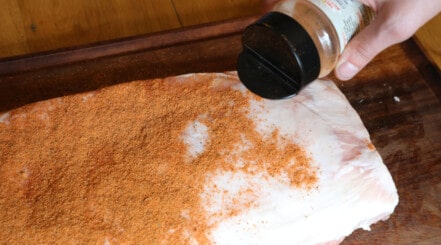
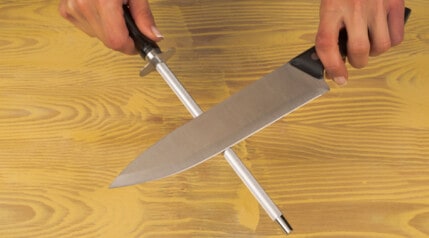
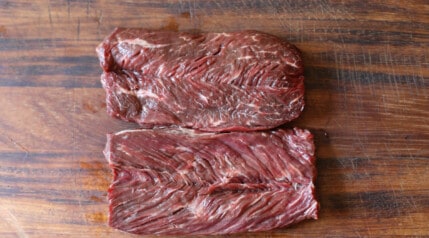

Hi, Mark.
Great article, and thanks for collecting all about rubs in the one place. Love the site as well, always great for someone living down under to find a site that covers a lot of ground with great info. Sounds like you have had a similar journey to me, although I am jealous of the kit you have, all for your research of course 🙂
Thanks, Mark! You can never have enough kit, eh? No matter how many BBQs you have, it’s always one less than you need, and don’t let anybody tell you otherwise 🙂
Hi, Mark.
I’m from Brazil, and I’ve found your website on Google when doing some research, and I really love it! Thanks for sharing your knowledge. Here we are starting using some rubs, and it’s becoming more popular.
Keep doing your articles, and thank you!
Thanks, Raul. I’m glad you find it useful.
So, are you a Churrasco king? I commonly cook my picanhas the Brazilian way, much loved in my house!
Thank you for this article. I learn, and I will try to experiment on what I’ve read.
I live in the Philippines.
Thanks,
Abner.
Sounds good, have fun with it 🙂
Fantástico !!!! Bravo !!!! Thank you for this article!
Hi Mark,
I’m from Ecuador, and I enjoy a lot to smoke some meats. I´m professional chef, but only a starter in the world of Smoking and BBQ.
this place is oine of the best that i can find to understand how to make good stuf,
thank a lot
Thanks, Simon.
I just bought my sweetheart his first smoker and came upon your articles!! What a wealth of knowledge you have! Thank you for sharing, as he is thrilled to be following your tips and making his own run by your helpful guidelines! Happy smoking and grilling,
Deb and Fritz
I was looking for a simple recipe and ended reading the History of the
World LOL. Now back to find me a Recipe LOL. Thank You but Way to much info LOL I did get some Good out of it don’t get me wrong 👍
lol…I hear ya, but it’s why there is a ‘table of contents’ up top so you can jump to the info you need, as well as up top a ‘simplified version’ section, so people can get quick answers, before really getting into the nitty gritty and an extended version that goes into great depth as the article continues. I thought (hoped) it covered all bases sufficiently?